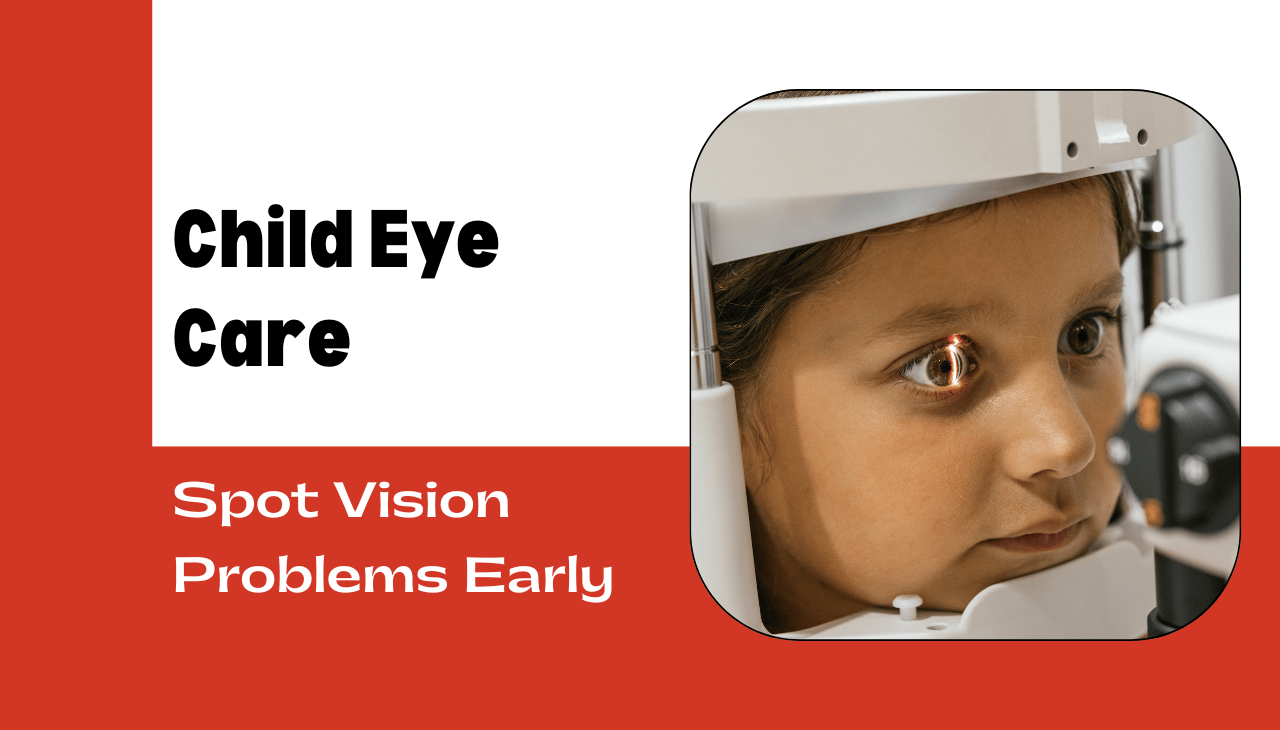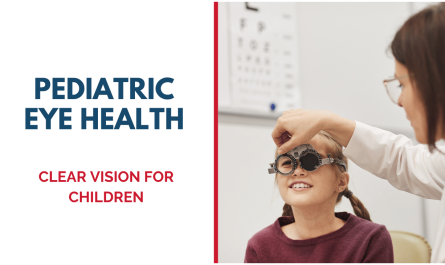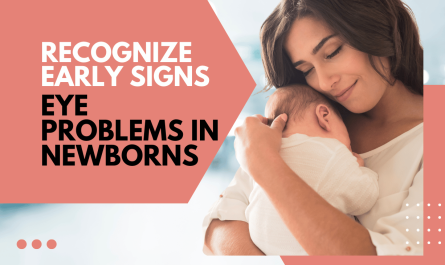Introduction
Children rely heavily on their vision for learning, development, and everyday activities. Good eyesight helps them read, write, play, and interact with the world. But children may not always realize they have a vision problem, and it often goes unnoticed by parents until it affects their performance or behavior.
That’s why recognizing the early signs of vision issues is important. From frequent squinting to sitting too close to the TV, there are many clues that your child may need professional eye care.
This blog explains the common signs that may indicate a vision problem in your child, why early detection matters, and how an eye specialist can help.
1. Frequent Squinting or Covering One Eye
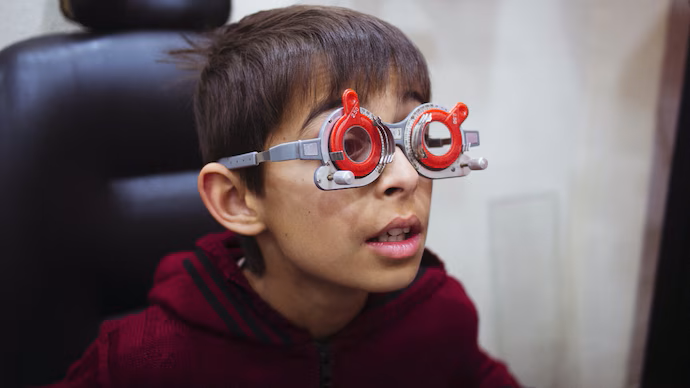
If your child regularly squints to see distant objects or closes one eye to focus, it may be a sign of a refractive error such as nearsightedness, farsightedness, or astigmatism.
Covering one eye while reading or watching TV could also indicate amblyopia (lazy eye) or double vision.
What to look for:
- Squinting during outdoor play or while watching TV
- Tilting the head to one side
- Closing one eye in bright light
2. Sitting Too Close to Screens
Children with uncorrected vision issues may sit very close to the television or hold books and tablets too close to their face.
This behavior might be an attempt to see better but can also worsen eye strain over time.
What to look for:
- Watching TV at a very short distance
- Leaning forward when using gadgets
- Complaining that the screen looks blurry from far away
3. Frequent Eye Rubbing or Complaints of Tired Eyes
While occasional eye rubbing is normal, doing it repeatedly throughout the day may suggest eye fatigue or discomfort.
It may also be a sign of an eye allergy, dryness, or uncorrected vision problems.
What to look for:
- Rubbing eyes even when not sleepy
- Complaining about headaches or eye pain
- Blinking or squinting excessively
4. Poor Performance in School
Vision problems can affect a child’s ability to concentrate and perform well academically. Children who cannot see clearly may struggle to read, write, or focus on the blackboard.
Sometimes, vision issues are mistaken for learning disabilities or behavioral problems.
What to look for:
- Trouble reading or copying from the board
- Poor handwriting or difficulty with coordination
- Complaints about headaches after school
5. Sensitivity to Light or Tearing Eyes
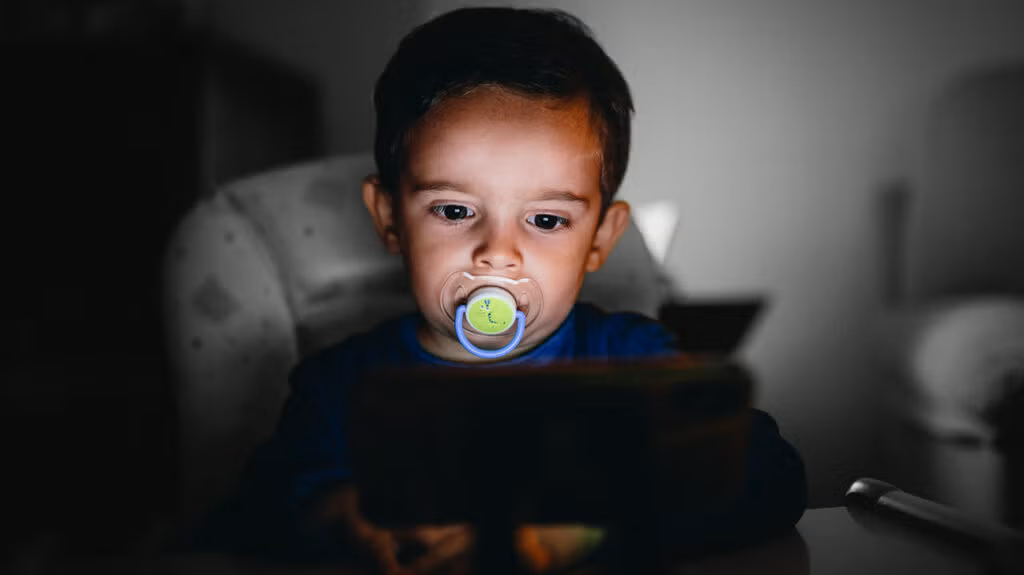
Children who are sensitive to sunlight, bright indoor lights, or camera flashes might be experiencing a condition known as photophobia.
Constant tearing can be caused by blocked tear ducts, eye strain, or infections.
What to look for:
- Covering eyes in bright light
- Constant blinking or turning away from light
- Watery eyes without any crying
6. Avoiding Visual Tasks
Some children avoid activities like coloring, puzzles, or reading not because they don’t enjoy them but because they struggle to see clearly.
Avoiding such tasks may be a defense mechanism to reduce frustration.
What to look for:
- Lack of interest in books or drawing
- Skipping lines or losing place while reading
- Complaints about words moving on the page
7. Family History of Eye Conditions
If you or a close family member has vision problems, your child may also be at higher risk. Conditions like lazy eye, strabismus (eye misalignment), and myopia can be hereditary.
In such cases, regular eye check-ups are essential, even if no symptoms are visible.
What to consider:
- Any history of glasses, squint, or eye surgery in the family
- Parent or sibling with high refractive error
- Medical conditions like diabetes or developmental delays
8. Eye Misalignment or Lazy Eye
Sometimes, parents notice that one of the child’s eyes appears turned inward or outward, especially when they are tired or not focusing.
This could indicate strabismus or amblyopia, which can lead to permanent vision loss if not treated early.
What to look for:
- Crossed or drifting eyes
- Lack of coordination while reaching for objects
- Frequent bumping into furniture
9. Delayed Visual Milestones in Infants
For babies and toddlers, certain visual responses are expected as they grow. A delay in tracking movement, making eye contact, or recognizing faces may indicate a visual development issue.
What to look for:
- Not responding to visual cues by 3–6 months
- Not following objects or people with their eyes
- Lack of interest in colorful or moving toys
Introduction for Consultation
Laxmi Eye Hospital is one of the largest and most trusted names in eye care across Mumbai and Navi Mumbai. With over 30 years of experience, the hospital is known for providing ethical, transparent, and advanced ophthalmic services.
Laxmi Eye Institute houses a team of skilled and highly trained ophthalmologists. The hospital offers world-class diagnostic and treatment facilities for various eye conditions including cataract, LASIK, glaucoma, retina, diabetic eye disease, and child eye care.
Their pediatric ophthalmology department focuses on early detection and treatment of childhood eye disorders using child-friendly techniques and expert care. Whether your child needs glasses, treatment for lazy eye, or eye muscle surgery, Laxmi Eye Hospital ensures that their vision is in safe hands.
Patients can visit any of their branches for a thorough eye check-up and specialized treatment.
Clinic Locations:
- Laxmi Eye Clinic (Dombivli)
1st Floor, Laxmi Eye Institute, SS Business Park, Gharda Circle, Azde Gaon, Dombivli East, Mumbai, Maharashtra 421201 - Laxmi Eye Clinic (Kharghar)
Office 108, 109 and 110, 1st Floor, Anant CHS Plot 31, Sector 04, Kharghar, Navi Mumbai, Maharashtra 410210 - Laxmi Eye Hospital & Institute (Panvel)
Mulla Hamid Rd, Old Panvel, Panvel, Navi Mumbai, Maharashtra 410206 - Laxmi Eye Institute (Kamothe)
Shop No 26/27, Near ICICI Bank, Pratik Gardens, Sector 34, Kamothe, Navi Mumbai, Maharashtra 410209
FAQs
1. How early should my child have their first eye exam?
Your child should have a comprehensive eye exam at 6 months, again at 3 years, and before starting school. If there are any signs of vision problems, don’t wait—get them checked sooner.
2. Are vision problems common in children?
Yes. Conditions like myopia, hyperopia, and lazy eye are common and can be treated effectively if detected early.
3. My child passed a school eye screening. Do they still need a full exam?
Yes. School screenings are basic and can miss detailed issues. A full exam by an eye specialist offers a complete view of your child’s vision health.
4. Can screen time damage my child’s eyes?
Excessive screen time can cause eye strain, dryness, and fatigue. Encourage breaks, limit device time, and ensure good lighting while using screens.
5. What if my child refuses to wear glasses?
It’s common. Let them pick their own frames and remind them that glasses help them see better. Positive reinforcement works well.
Conclusion
Your child’s vision plays a critical role in how they learn and grow. Recognizing the early signs of eye issues helps in timely diagnosis and treatment, reducing the risk of long-term vision problems.
If you’ve noticed any signs mentioned above—or even if you haven’t—getting your child’s eyes checked by a specialist can give you peace of mind and help them see the world clearly.
Laxmi Eye Hospital offers trusted child eye care near you. Book a consultation today and ensure your child’s vision stays healthy and strong.

